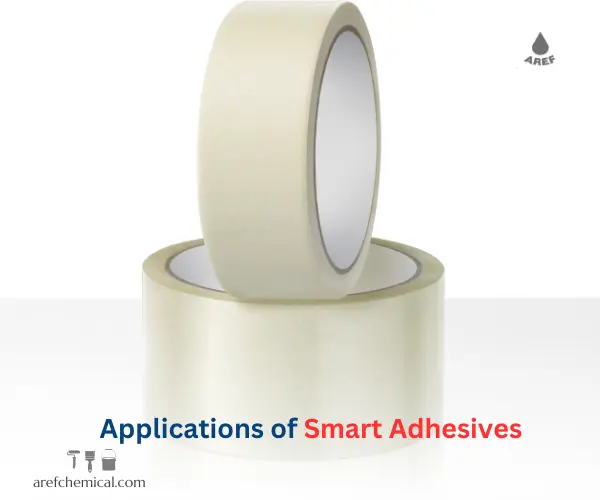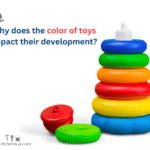In recent decades, technological advancements have rapidly transformed the world. One of the fields significantly impacted by these changes is the adhesive industry. “Smart adhesive,” as an exciting and revolutionary innovation, has attracted the attention of researchers, industrialists, and even the general public due to its unique properties and wide-ranging applications. Smart adhesives, recognized as the next generation of adhesive materials, not only possess conventional adhesive properties but also have the ability to respond to environmental stimuli and specific conditions.
What is a Smart Adhesive?
Throughout history, humans have always sought innovative solutions for attaching objects together. From the time early humans used tree sap to glue stone tools to wooden handles, to the present day where we see the use of advanced polymeric materials, Adhesives, which were initially used only as simple bonding tools, have now become essential components in various industries. From automotive and aerospace to medicine and electronics, adhesives play a vital role in manufacturing and development processes. However, with technological progress and the need for materials that can respond to environmental conditions and adjust their performance based on requirements, the concept of “smart adhesive” has emerged.
A smart adhesive is a type of adhesive material that, in addition to conventional adhesive properties, has the ability to respond to specific stimuli or environmental conditions. These stimuli can include changes in temperature, pH, light, humidity, pressure, or even electric fields. In other words, smart adhesives are not just bonding materials; they are intelligent systems capable of reacting to their environment and adjusting their performance based on needs.
This unique capability has made smart adhesives one of the most attractive areas of research in recent decades. Due to these features, smart adhesives are not merely recognized as simple bonding agents but as a modern technology with the potential to play a role in various fields, including medicine, military industries, electronics, and even environmental protection.
These types of adhesives are made from advanced polymeric materials, nanoparticles, and modern technologies. However, designing and manufacturing smart adhesive requires a deep understanding of material properties, advanced mechanics, and chemistry.
How Do Smart Adhesives Work?
The functionality of smart adhesives can be divided into two main parts:
- Adhesive Properties of Smart Adhesive:
Like conventional adhesives, smart adhesive uses chemical or physical bonds to adhere to surfaces.
- Response to Environmental Stimuli:
This part represents the unique feature of smart adhesives. These materials are designed to change their properties when exposed to environmental changes. For example, an adhesive that is sticky at room temperature may lose its adhesion at high temperatures or even detach itself automatically. This property allows it to function intelligently under different conditions.
Unique Features of Smart Adhesives
The features discussed below will leave you amazed.
1. Sensitivity to Environmental Changes:
Smart adhesive can change, for example, humidity, temperature or even pH, or light. This feature makes them highly suitable for specialized applications.
2. Adjustability:
Unlike conventional adhesives, which have fixed properties, smart adhesive can modify their behavior based on needs. This is particularly useful in industries requiring high flexibility.
3. Self-Healing Properties:
Some smart adhesives possess self-healing capabilities, meaning they can repair themselves automatically if damaged and regain their adhesion.
4. Biocompatibility:
Some smart adhesives are made from biocompatible materials, making them ideal for medical and environmental applications.
Due to these features, smart adhesives are not only recognized as simple bonding materials but as a modern technology capable of playing a role in various fields such as medicine, military industries, electronics, and even environmental protection
Applications of Smart Adhesives
Because of their unique properties, these kinds of adhesives are use in various fields. Below, we explore some of their most important uses:
1. Medicine and Health:
One of the most important applications of smart adhesive is in the medical field. They can be used as skin-adhesive bandages, in diagnostic devices, or even in repairing damaged tissues. For instance, adhesives that exhibit strong adhesion at body temperature but lose stickiness at lower or higher temperatures are highly suitable for medical bandages.
2. Electronics Industry:
In the electronics industry, smart adhesive can be used to connect sensitive components. These adhesives can respond to temperature or voltage changes, thereby protecting the components.
3. Aerospace Industry:
In the aerospace industry, smart adhesives can be used to bond lightweight and durable parts. with adjustability and high resistance, these are great for aerospace work.
4. Environmental Protection:
Biocompatible smart adhesive can be used in producing biodegradable and recyclable packaging materials. This greatly helps reduce environmental pollution.
5. Automotive Industry:
In the automotive industry, smart adhesive can be used to bond internal and external car parts. Due to their high resistance to varying weather conditions, they are highly beneficial.
6. Protective Coatings:
Smart adhesive can serve as protective coatings for buildings, pipes, and other structures. These coatings are able to change in environmental changes and keep the structures.
Challenges and Limitations
Despite all the advantages of smart adhesive, their development and use come with challenges:
- High Cost:
The production of smart adhesives, due to the use of advanced materials and technologies, is generally expensive. This can hinder their widespread use in some industries.
- Complex Production Process:
Manufacturing these adhesives requires advanced equipment and specialized knowledge, which may pose difficulties in some countries.
- Limitations in Long-Term Applications:
Some smart adhesive may not perform well in long-term applications, necessitating further research to improve their properties.
Future Prospects of Smart Adhesive
Smart adhesives, as an emerging technology, have a bright future ahead. With advancements in material science and modern technologies, it is expected that these adhesives will play an increasingly significant role in daily life and various industries. Some future prospects for this technology include:
1. Development of Biocompatible Smart Adhesives:
Given environmental concerns, the development of biocompatible and biodegradable smart adhesives will be a priority in the future.
2. Use in Robotics and Automated Systems:
Smart adhesive can be used in robotics and automated systems for connecting parts and automatic repairs.
3. Military Applications:
In the future, these adhesive can be used in military equipment for bonding parts and protecting equipment in harsh conditions.
4. Smart Cities:
In future smart cities, smart adhesive can be used in construction, protective coatings, and even energy management.
However, the development and use of smart adhesives are not without challenges. High production costs, complex manufacturing processes, and limitations in long-term applications are among the issues that still need to be addressed. But, the future of this technology is brilliant.
With further advancements in material science and modern technologies, it is expected that smart adhesive will play a greater role in daily life and various industries. This technology is not only recognized as an industrial tool but also as a bridge to a smarter and more modern future.
Conclusion
Smart adhesive, as an exciting and revolutionary innovation, is transforming the way we use adhesive materials. By combining material science, chemistry, and technology, this innovation has provided new possibilities for various industries. Despite existing challenges and limitations, the future outlook for this technology is very bright. With further advancements in materials and technology, it is expected that smart adhesive will play a greater role in improving quality of life and sustainable development.







31 Responses
Great article
Some times smart adhesive is made of biocompatible materials
The future prospects of smart adhesives are quite promising, driven by advancements in technology and the increasing demand for innovative materials across various industries.
As manufacturers aim to reduce vehicle weight for better fuel efficiency, smart adhesives can provide strong bonding solutions that replace traditional welding and mechanical fasteners.
Future vehicles may utilize adhesives that can integrate sensors for monitoring structural integrity or other performance metrics.
Smart adhesives are an advanced type of adhesive that typically utilizes new technologies in their structure. These adhesives have special properties that distinguish them from conventional adhesives.
Some smart adhesives can react to changes in temperature or humidity, affecting their adhesion properties.
Some smart adhesives can automatically repair themselves, meaning they can return to their original state if broken or damaged.
Some adhesives can sense data such as pressure and tension and report it to the user.
Smart adhesives are particularly used in medicine to seal wounds and tissue connections, and can help deliver needed medications to the wound site.
Smart adhesive refers to advanced adhesives that utilize innovative technologies to provide enhanced properties and functionalities compared to traditional adhesives.
Smart Adhesives refer to advanced adhesive technologies that incorporate special properties or functionalities, often enabled by innovative materials and chemistry.
These adhesives are designed to respond dynamically to changes in their environment or to specific stimuli. Here are some key characteristics and examples of smart adhesives:
Smart adhesives can change their properties based on external factors such as temperature, humidity, light, or pressure. This allows them to adapt to different conditions.
Some smart adhesives have the ability to repair themselves after being damaged. When a crack or break occurs, the adhesive can reform its bond without requiring additional material.
Certain smart adhesives can release drugs or other substances in a controlled manner, making them useful in biomedical applications such as drug delivery systems.
Smart adhesives may have electrical conductivity, which allows them to be used in electronic applications, such as attaching components on flexible substrates.
Smart adhesives represent a fascinating area of research and development, integrating advanced technologies to enhance their functionality beyond traditional adhesive properties.
Future smart adhesives are likely to include self-healing capabilities that allow them to repair themselves after damage. This is particularly useful in structural applications where maintaining integrity is crucial.
Aerospace, automotive, and construction industries can benefit from materials that can recover from small cracks or damage.
These adhesives can change their properties or bond strength in response to environmental stimuli such as temperature, humidity, or pH levels.
In the medical field, such adhesives could be used for wound dressings that adapt to the healing process or for drug delivery systems that release medication in response to specific conditions.
Future smart adhesives could incorporate sensors to monitor structural integrity or environmental conditions. This could enable real-time feedback about the materials they are bonding.
Smart adhesive refers to a type of adhesive that has advanced features such as responsiveness to environmental stimuli (like heat, light, or moisture), ability to bond quickly, or reversible bonding.
These adhesives often incorporate innovative materials like nanotechnology, polymers, or bio-inspired components to enhance performance, multifunctionality, or ease of use.
Self-healing adhesives that repair themselves after damage.
Reversible adhesives that can be de-bonded with certain triggers.
They’re used in high-tech applications, electronics, medicine, and advanced manufacturing.
👌🏻👌🏻👌🏻👌🏻🙏🏽🙏🏽🙏🏽🙏🏽💚
😍😍😍😍😍
🙏🙏🙏🙏🙏🙏🙏